Brief Introduction to the Concept of Malocclusions
A malocclusion, or in simpler terms, an “improper bite,” occurs when there is a difference in the sizes of the top and bottom jaws, leading to an irregular fit of the teeth. These misalignments can range from subtle, aesthetic concerns to severe, functional problems that impact daily life activities like eating and speaking.
Whether it’s an overbite, where the upper front teeth excessively overlap the lower ones, or a crossbite, where one or more upper teeth bite on the inside of the lower teeth, or even a more complex case, malocclusions are common dental issues seen by orthodontists.
The Importance of Recognizing and Treating Malocclusions
Malocclusions are not just about cosmetic appearance; they can contribute to a myriad of other problems. From speech impediments and difficulty in chewing to a heightened risk of tooth wear and tear, the implications of untreated malocclusions can be extensive and, at times, even debilitating. Early detection and treatment of these irregularities not only ensure a more aesthetically pleasing smile but also contribute significantly to overall oral health and quality of life.
Burke & Redford Orthodontists – Dr. Ryan Redford and Dr. Michael Burke
Burke & Redford Orthodontists, a renowned orthodontic practice with offices in Temecula and Lake Elsinore, California, is dedicated to creating beautiful, healthy smiles in a comfortable and welcoming environment. Headed by Dr. Ryan Redford and Dr. Michael Burke, this team of experienced professionals offers advanced orthodontic solutions to a wide range of malocclusions.
Dr. Redford and Dr. Burke believe in personalized care, leveraging the latest technologies and techniques and catering to the unique needs of every patient. Their comprehensive understanding and treatment of malocclusions have transformed countless smiles, and they are committed to continuing this mission with over 30 years of experience treating patients in Southern California.
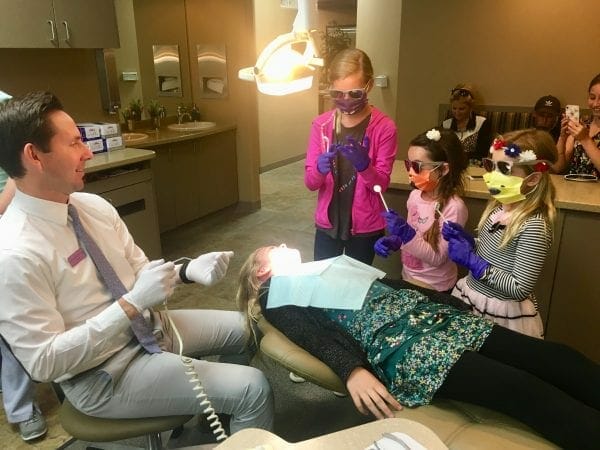
The Science Behind Malocclusions
What is Malocclusion?
A malocclusion is a technical term used by dental professionals to describe the misalignment of the teeth and jaws. When the teeth are not properly aligned, it can affect the way a person chews, talks, and even how they look. It is an anomaly in the relationship between the upper (maxillary) and lower (mandibular) dental arches. The term originates from Latin, where ‘mal’ means ‘bad’ and ‘occlusion’ refers to the alignment of the teeth. Therefore, a malocclusion is essentially a ‘bad bite’.
The Causes of Malocclusions
Malocclusions can arise from a variety of causes. Some are due to inherited genetic traits and develop as a person grows. These include discrepancies in jaw size or the presence of extra or missing permanent teeth.
Other causes of malocclusions are acquired, resulting from certain behaviors or experiences like mouth breathing due to allergies or enlarged adenoids and tonsils, improper dental restorations, habits such as thumb sucking during infancy and early childhood, and the prolonged use of a pacifier or bottle in childhood. Trauma or injury to the jaw, tumors in the mouth or jaw, and certain oral health conditions can also contribute to the development of malocclusions.
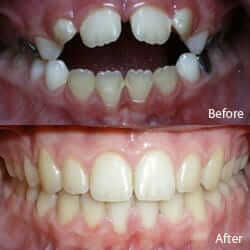
The Possible Health Complications Associated with Untreated Malocclusions
If left untreated, malocclusions can lead to various health complications. These may include:
- Poor Oral Hygiene: Misaligned teeth can be challenging to clean effectively, leading to an increased risk of tooth decay and gum disease.
- Speech Difficulties: Severe malocclusions can affect the way a person speaks, leading to the development of speech impediments.
- Chewing Problems: Misaligned teeth can make it hard to chew food properly, potentially impacting nutrition.
- Wear and Damage: Malocclusions can lead to uneven wear and tear on the teeth, making them more susceptible to breakdown and the need for restoration.
- Self-Esteem Issues: People with visibly misaligned teeth and large bite discrepancies may feel self-conscious about their appearance, affecting their confidence and self-esteem.
Early diagnosis and timely treatment by experts like Dr. Ryan Redford and Dr. Michael Burke at Burke & Redford Orthodontists can prevent these complications and ensure healthier, happier smiles.
Types of Malocclusions
Class I Malocclusion
Description and Common Characteristics
Class I malocclusion, also known as neutroclusion, is the most common type of malocclusion and is characterized by a normal bite pattern with slight irregularities. This means the bite is correct and the upper teeth overlap the lower teeth properly, which is considered normal. The issue in a Class I malocclusion lies in the individual positioning of the teeth, not the overall alignment of the jaws or the way the upper and lower teeth fit together.
Common characteristics of a Class I malocclusion may include overcrowding of the teeth, unusually large gaps between the teeth, or teeth that are twisted, rotated, or displaced in some other way. In some instances, an individual might have an overbite or an underbite, but these are not as pronounced as in Class II or Class III malocclusions.

Potential Treatments
The treatment for Class I malocclusion depends on the specific nature of the problems. If overcrowding is the main issue, it might be necessary to extract one or more teeth to create space for the remaining teeth to align properly. In other cases, where gaps or misalignments are the problem, orthodontic treatments such as braces, or clear aligners may be used to move the teeth into their correct positions.
In some cases, a combination of orthodontic and cosmetic treatments might be recommended. For instance, orthodontic treatment may be used to correct the overall alignment of the teeth, followed by veneers or bonding to correct any minor issues such as small gaps or poorly shaped teeth.
As with all orthodontic issues, the most suitable treatment will depend on the individual’s specific circumstances and will be determined during your free orthodontic consultation with an experienced orthodontist like Dr. Ryan Redford at Burke & Redford Orthodontists.
Class II Malocclusion
Description and Common Characteristics
Class II malocclusion, also known as distoclusion or an overbite, is characterized by the upper jaw and teeth significantly set forward of the lower jaw and teeth. This condition is often noticeable as it gives an appearance of a “retrognathic” or “retrusive” lower jaw, commonly referred to as a recessed lower jaw.
Two subtypes exist within this class: Division 1, where the overjet (horizontal overlap of the upper front teeth) is excessive and the upper front teeth are protruded, often associated with a “buck tooth” appearance; and Division 2, where the overjet may be minimal, but the upper central incisors are tilted backward, or the lateral incisors are tilted forward.
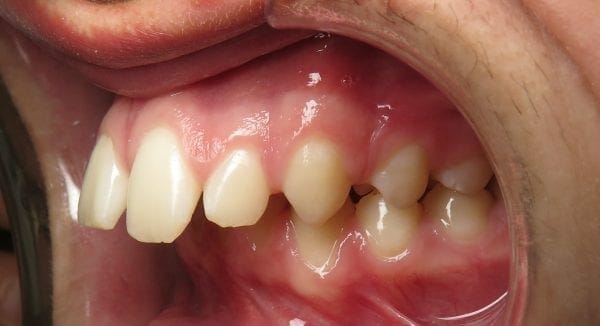
Potential Treatments
The treatment options for Class II malocclusion vary based on the severity and specific characteristics of the malocclusion. In cases with minor overbites, braces or aligners may be sufficient to reposition the teeth for a proper bite.
For more severe cases, or if the patient’s face appears unbalanced, corrective jaw surgery may be recommended to adjust the position of the bones. This is often combined with orthodontic treatment to ensure the teeth fit properly after surgery.
Functional appliances can also be used, particularly in growing children and adolescents, to guide jaw growth and correct malocclusion. These include devices like the Twin Block or Herbst appliances, which work by encouraging the lower jaw to move forward while restraining the forward growth of the upper jaw as well as moving the upper and lower teeth within their respective jaws.
As each case of Class II malocclusion is unique, treatment planning is highly individualized. Consultation with an experienced orthodontist like Dr. Ryan Redford or Dr. Michael Burke at Burke & Redford Orthodontists is crucial to evaluate the most effective treatment strategy.
Class III Malocclusion
Description and Common Characteristics
Class III malocclusion, also known as prognathism or underbite, is characterized by the lower jaw protruding or extending forward, causing the lower teeth to set forward of the upper teeth. This leads to a ‘bulldog’ appearance where the chin is prominent.
This type of malocclusion can be a result of an overdeveloped lower jaw, an underdeveloped upper jaw, or a combination of both. Class III malocclusion is often genetic, meaning it is passed down from parents to children.

Potential Treatments
The treatment options for Class III malocclusion can vary and are usually determined based on the severity of the condition and the age of the patient.
For children and young teenagers, the treatment often involves the use of growth modification devices. These devices can help to guide the growth of the jaws into a more aligned position. Orthodontic braces or aligners may then be used to correct the position of the teeth.
In adults, where jaw growth has stopped, orthodontics alone may not be enough to correct a severe Class III malocclusion. Orthognathic surgery, which involves surgically repositioning the jaws, might be needed in conjunction with orthodontic treatment.
After the treatment, retainers are used to maintain the new position of the teeth.
As with all malocclusions, the appropriate treatment strategy is best determined by an experienced orthodontist. Dr. Ryan Redford and Dr. Michael Burke of Burke & Redford Orthodontists have the experience and expertise to evaluate and treat Class III malocclusions effectively.
Open Bite
Description and Common Characteristics
An open bite is a type of malocclusion where the upper and lower teeth do not touch when the mouth is closed, creating a vertical opening or gap. This can occur at the front of the mouth (anterior open bite) or at the back of the mouth (posterior open bite).
Common characteristics include difficulty biting or chewing food, lisping or other speech problems, and sometimes aesthetic concerns. The causes of an open bite can vary, but it is often due to a combination of genetic factors and habits such as thumb sucking, prolonged pacifier or bottle use, or tongue thrusting.

Potential Treatments
The treatment of an open bite depends on its severity and cause. For mild open bites caused by habits like thumb sucking, simply stopping the habit may allow the bite to close naturally. For more severe cases, or when the patient is older and the jaws have stopped growing, more active intervention is necessary.
Orthodontic treatment, including braces or clear aligners, can be used to move the teeth into a more aligned position. In some cases, additional appliances like a crib or a splint may be used to discourage habits like finger sucking that can contribute to an open bite.
In cases where the open bite is caused by skeletal problems or is too severe to be treated with orthodontics alone, orthognathic surgery may be required. This involves surgically repositioning the jawbones to correct the bite.
As with all types of malocclusions, it is crucial to consult with experienced orthodontists like Dr. Ryan Redford and Dr. Michael Burke of Burke & Redford Orthodontists to determine the most effective treatment plan for an open bite.
Overbite
Description and Common Characteristics
An overbite is a type of malocclusion where the upper front teeth overlap the lower front teeth excessively when the mouth is closed. In other words, the lower front teeth are not visible when biting down. While a small degree of overlap is normal and can even be desirable, an excessive overbite (also known as a deep bite) can cause various problems.
Common characteristics of an overbite include the lower front teeth biting into the roof of the mouth, a collapsed appearance of the lower third of the face, excessive wear on the biting edges of the front teeth, and potential damage to the gums or palate.

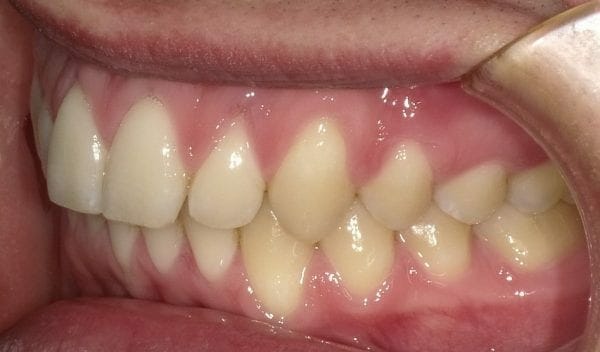
Potential Treatments
The treatment for an overbite depends on the severity and underlying cause of the condition. In many cases, orthodontic treatment using braces or clear aligners can be very effective. These devices apply gentle pressure over time to gradually move the teeth into a more appropriate position, thereby correcting the overbite.
In severe cases or when the overbite is caused by a skeletal issue, orthognathic surgery may be required. This involves surgical adjustment of the jaw bones to bring the teeth into alignment.
For children with developing overbites, early intervention with orthodontic appliances such as a biteplate or headgear can help guide jaw growth and prevent the overbite from becoming more severe.
As with all dental issues, an experienced orthodontist like Dr. Ryan Redford or Dr. Michael Burke at Burke & Redford Orthodontists can provide a thorough evaluation and recommend the best treatment plan for an overbite.
Underbite
Description and Common Characteristics
An underbite, another term for a Class III malocclusion described above, is a type of malocclusion where the lower front teeth overlap the upper front teeth when the mouth is closed. This is usually the result of the lower jaw being larger or more forward positioned than the upper jaw.
Common characteristics of an underbite include an unusual facial appearance where the chin seems prominent, difficulty biting and chewing food, increased wear and tear on the teeth, and potential speech difficulties.
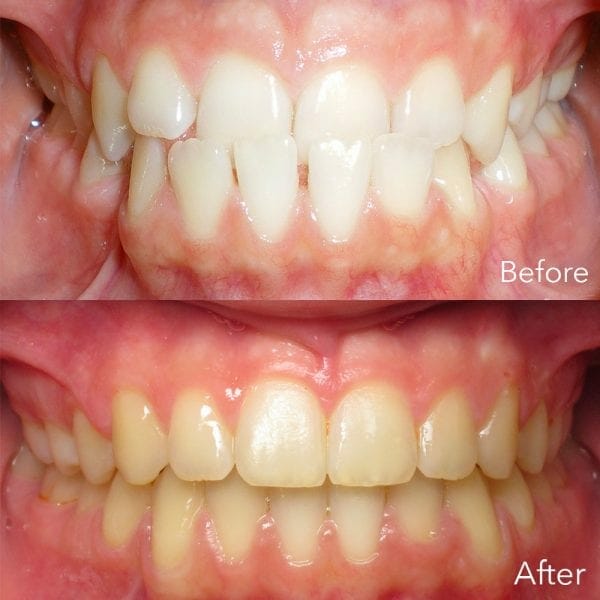
Potential Treatments
Treatment for an underbite often depends on its severity and the age of the patient. In young children, early intervention can help guide jaw growth and may prevent the need for more invasive treatments later. This can involve using orthodontic appliances like a palatal expander and reverse-pull face mask.
In adults or severe cases where the underbite is primarily due to skeletal issues, orthognathic surgery may be necessary. This involves surgically repositioning the jawbones to correct the underbite.
In less severe cases or when the underbite is primarily due to misaligned teeth rather than jaw issues, orthodontic treatment like braces or clear aligners may be enough to correct the problem.
Regardless of the severity or cause of the underbite, a consultation with experienced orthodontists like Dr. Ryan Redford and Dr. Michael Burke of Burke & Redford Orthodontists is crucial for an accurate diagnosis and effective treatment plan.
Crossbite
Description and Common Characteristics
A crossbite is a type of malocclusion where some of the upper teeth sit inside the lower teeth when the mouth is closed, instead of resting slightly over the lower teeth as is the case in a normal bite. This can occur on one side of the mouth (unilateral crossbite) or both sides (bilateral crossbite), and can affect the front teeth (anterior crossbite, often appearing as an underbite) or the back teeth (posterior crossbite).
Common characteristics of a crossbite include asymmetrical growth of the jaw, facial imbalance, wear and tear on the teeth, gum recession, and difficulty biting and chewing food.
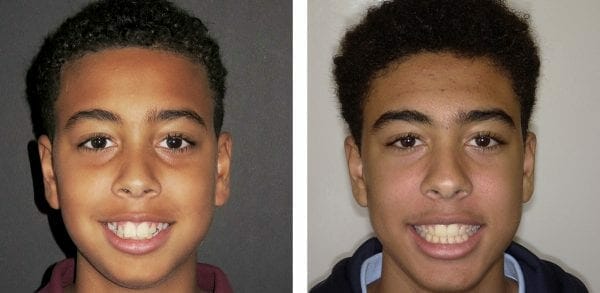
Potential Treatments
Crossbite treatment varies based on the type and severity of the crossbite, as well as the age of the patient. For children, early intervention with orthodontic appliances can help guide the jaw and teeth into better alignment. These appliances can include a palatal expander, which widens the upper jaw to correct a posterior crossbite, or braces or clear aligners to adjust the position of individual teeth.
For adults or severe cases, orthodontic treatment with braces or clear aligners may be used, often in combination with surgery. For an anterior crossbite, this might involve surgically repositioning the upper jaw, while for a posterior crossbite it could involve expanding the upper jaw surgically.
After the crossbite is corrected, retainers are typically used to maintain the new position of the teeth. As always, an experienced orthodontist like Dr. Ryan Redford or Dr. Michael Burke at Burke & Redford Orthodontists will be able to evaluate and recommend the best treatment plan for a crossbite.
Crowding
Description and Common Characteristics
Dental crowding, often simply referred to as crowding, is a type of malocclusion where there is insufficient space in the jaw for all the teeth to fit properly. This can cause the teeth to overlap, twist, or be displaced from their normal position.
Common characteristics of crowding include crooked or overlapping teeth, difficulty cleaning certain areas of the mouth leading to an increased risk of tooth decay and gum disease, and potential impact on the appearance of the smile and overall facial aesthetics.
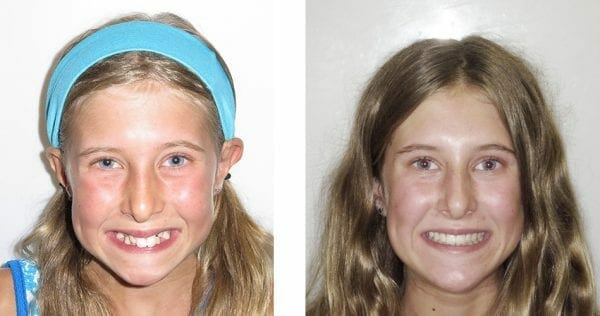
Potential Treatments
The treatment for crowding depends on the severity of the crowding and the age of the patient. In mild to moderate cases, orthodontic treatment with braces or clear aligners may be sufficient to correct the problem. These devices apply pressure to the teeth, gradually moving them into a more appropriate position.
In more severe cases, or when the size of the jaw is not adequate to accommodate all the teeth, slenderizing the width of teeth tooth extraction may be necessary. This creates more room for the remaining teeth to be properly aligned.
In some cases, particularly for children and teenagers, a palatal expander may be used to widen the upper jaw and create more space for the teeth. If a child is seen early enough (between 7 and 10 years of age), space maintainers may be used to limit the severity of crowding and decrease the chances of permanent tooth extractions later.
As always, treatment should be individualized based on the specific needs of the patient. Experienced orthodontists like Dr. Ryan Redford and Dr. Michael Burke of Burke & Redford Orthodontists can provide a thorough evaluation and effective treatment plan for dental crowding.
Spacing
Description and Common Characteristics
Dental spacing, also known as diastema, is a type of malocclusion characterized by noticeable gaps or spaces between teeth. This can occur between any two teeth but is most noticed between the two upper front teeth.
Spacing issues can arise due to various reasons, including a mismatch between the size of the teeth and the size of the jaw, missing or undersized teeth, habits like thumb sucking, or an oversized labial frenum, the tissue that extends from the inside of the upper lip to the gum just above the two upper front teeth.
Common characteristics of spacing include aesthetic concerns due to visible gaps between teeth, potential speech issues, and food getting stuck between the teeth leading to an increased risk of gum disease and tooth decay.
Potential Treatments
Treatment for spacing issues varies based on the cause and extent of the spacing. In many cases, orthodontic treatment with braces or clear aligners can close the gaps between teeth by gradually moving them into a better position.
If the spacing is due to missing or undersized teeth, restorative procedures such as dental implants, bridges, crowns, veneers, or bonding may be required to fill the gaps.
For cases where an oversized labial frenum is causing the space, a simple surgical procedure known as a frenectomy can be performed after closing the space orthodontically to reduce the chances of the space recurring later.
As with all types of malocclusions, the most appropriate treatment strategy should be determined by an experienced orthodontist. Dr. Ryan Redford and Dr. Michael Burke at Burke & Redford Orthodontists have the expertise to diagnose and effectively treat dental spacing issues.
Diagnosis and Treatment of Malocclusions at Burke & Redford Orthodontists
The Diagnostic Process for Identifying Malocclusions
At Burke & Redford Orthodontists, the process of diagnosing malocclusions begins with a comprehensive oral examination. This includes a visual inspection of the teeth and jaws, as well as taking detailed photographs and x-rays to get a more in-depth understanding of the patient’s unique oral structure.
Dr. Ryan Redford will also review the patient’s medical and dental history and may make impressions to create a precise 3D model of the teeth. All this information is used to identify the type and severity of malocclusion, its potential impacts on the patient’s oral health and function, and the most effective treatment options.
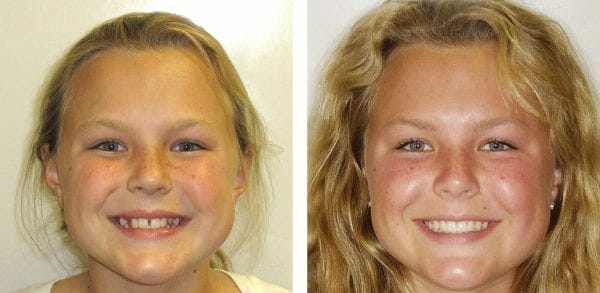
Treatment Philosophies and Technologies Employed by Dr. Ryan Redford and Dr. Michael Burke
Dr. Redford and Dr. Burke firmly believe in a patient-centered approach to orthodontic treatment. This means that each treatment plan is carefully tailored to meet the unique needs and preferences of the individual patient, with a strong focus on achieving not just aesthetic improvements, but also optimal oral health and function.
In terms of technology, Burke & Redford Orthodontists utilize the latest advancements in the field to ensure efficient and effective treatment. This includes digital scanners for digital impressions, digital X-rays and 3D imaging for precise diagnosis, as well as advanced orthodontic systems such as self-ligating braces, clear aligners, and cutting-edge appliances for early intervention in pediatric patients.
Success Stories and Case Studies from the Practices in Temecula and Lake Elsinore, California
Over the years, Burke & Redford Orthodontists have helped numerous patients in Temecula and Lake Elsinore achieve beautiful, healthy smiles through effective treatment of malocclusions. From children and teenagers with developing malocclusions to adults seeking to improve their smiles and oral health, Dr. Redford and Dr. Burke have numerous success stories that testify to their expertise and dedication.
- A patient with severe overcrowding and a Class III malocclusion achieved a dramatically improved bite and straight, evenly spaced teeth after a comprehensive treatment plan involving braces and surgical intervention.
- A young patient with both an underbite and crossbite, whose parents sought early intervention, was treated by Dr. Redford with the use of an expander and a specialized growth appliance. The child’s jaws and teeth were effectively guided into a more optimal position, eliminating the need for jaw surgery in the future.
Each of these success stories not only serves as a testament to the skills and dedication of Dr. Redford and Dr. Burke, but also to the transformative power of orthodontic treatment when it comes to enhancing oral health, function, and confidence in one’s smile.

Prevention and Education
Tips for Parents to Identify Potential Malocclusions in Their Children
While orthodontists are best suited to identify malocclusions, there are several signs that parents can look for in their children that may indicate the presence of a bite problem. These include:
- Difficulty in chewing or biting
- An underbite
- Sucking the thumb beyond the age of 5
- Delayed loss of baby teeth or early loss of baby teeth
- Protruding teeth
- Misaligned teeth or jaws
- Frequent biting of the cheek or roof of the mouth
If parents notice any of these signs, it’s recommended to schedule a consultation with an orthodontist for a comprehensive evaluation.
The Importance of Regular Dental Check-ups in Early Diagnosis
Regular dental check-ups, ideally every six months, play a critical role in early diagnosis of malocclusions. Dentists and orthodontists can often identify early signs of malocclusions long before they become apparent to the untrained eye. The sooner a malocclusion is identified, the more effectively it can be treated. This is particularly true for children, as early intervention can often guide the growth of the jaws and eruption of the permanent teeth, preventing more serious malocclusions from developing.

Prevention Measures and Habits for Maintaining Good Oral Health
Prevention is an important aspect of maintaining good oral health. While not all malocclusions can be prevented, as many are due to genetics, certain habits can help promote good oral health and may reduce the risk of developing some types of malocclusions. These include:
- Encouraging children to give up thumb-sucking and pacifier use by the age of 3.
- Ensuring kids eat a healthy diet and avoid foods high in sugar that can lead to tooth decay.
- Making sure your child wears a mouthguard during sports activities to protect their teeth from injury.
- Practicing good oral hygiene, including brushing twice a day and flossing daily, to maintain healthy teeth and gums.
- Regular dental check-ups to monitor dental health and development.
By following these measures and habits, individuals can take proactive steps towards maintaining a healthy smile and potentially mitigating the effects of malocclusions. As always, regular consultations with dental professionals like Dr. Ryan Redford and Dr. Michael Burke at Burke & Redford Orthodontists are essential for timely identification and treatment of any orthodontic issues.
Recap of the Importance of Treating Malocclusions and How Burke & Redford Orthodontists Can Help
Treating malocclusions is not just about achieving a beautiful smile, it’s about enhancing overall oral health and functionality, reducing the risk of other dental issues, and boosting self-confidence. The experienced team at Burke & Redford Orthodontists, led by Dr. Ryan Redford and Dr. Michael Burke, is committed to providing expert orthodontic care and personalized treatment plans to effectively address various types of malocclusions.

Reach Out to Burke & Redford Orthodontists for an Orthodontic Consultation
If you suspect that you or your child may have a malocclusion, or if you’re seeking to improve the aesthetics and function of your smile, do not hesitate to reach out to Burke & Redford Orthodontists. Their friendly and professional team is always ready to assist with your queries, discuss your concerns, and help you understand your treatment options.
Contact Information
Call (951) 699-8011 during business hours to schedule a consultation.
Review hundreds of actual patient reviews.
Burke & Redford Orthodontists in Temecula
Burke & Redford Orthodontists in Lake Elsinore
Online Website Appointment Scheduling Requests
Free Orthodontic Consultation through our website anytime.
A member of our Dr. Redford’s team will be more than happy to assist you. Remember, a healthier, brighter smile could just be a click away.